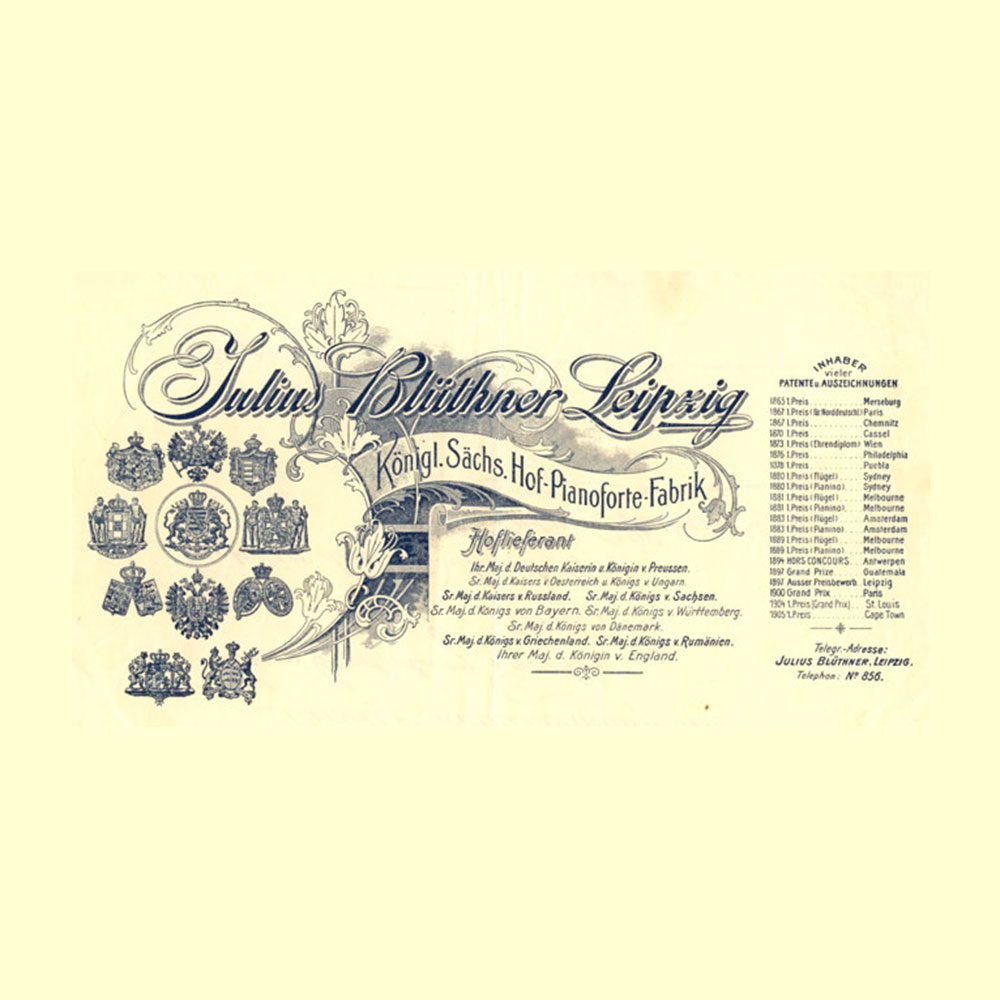Bluthner
Leipzig, Germany
Julius Bluthner came from Falkenhain in Germany. A cabinet-maker by trade, he learnt to make pianos from several craftsmen, including Spangenbur. In 1853, he opened his own workshop in Leipzig where he made grand pianos. He exhibited at the World’s Fair in Munich. He gained a strong reputation, becoming a supplier to the Leipzig Conservatorium and the King of Saxony. Production numbers increased, with the production of particularly well-designed upright pianos. In 1864, he employed 137 workers and made around 3,000 pianos a year. In 1873 he patented his most brilliant invention: the aliquot system. The idea was to add a fourth string, not hit by a hammer but instead vibrating in sympathy, having been tuned to the unison. This allowed vibrant harmonics in the mid-range and treble. He filed numerous patents improving actions for upright pianos and damper system. He introduced brass flanges into upright piano actions. Around 1898 he was making 1.3m cross-strung upright pianos with 88 notes (A-C) with a full cast-iron frame with no frame bushings. Their grand pianos are equipped with a patented Bluthner action, with single escapement and a repetition spring, and from the 1910s onwards they have Schwander actions. Julius Bluthner died in Leipzig in 1910, with production having reached 81,000 units. Production continued under his son, with no major innovations but with a remarkably high quality for the quantity produced: in 1920 production reached 100,000 units and 125,500 in 1940. Their facilities were destroyed by bombing during the second world war, but production restarted thanks to East German government help. The Aliquot system is still used on today’s grand pianos.
www.bluethner.de




